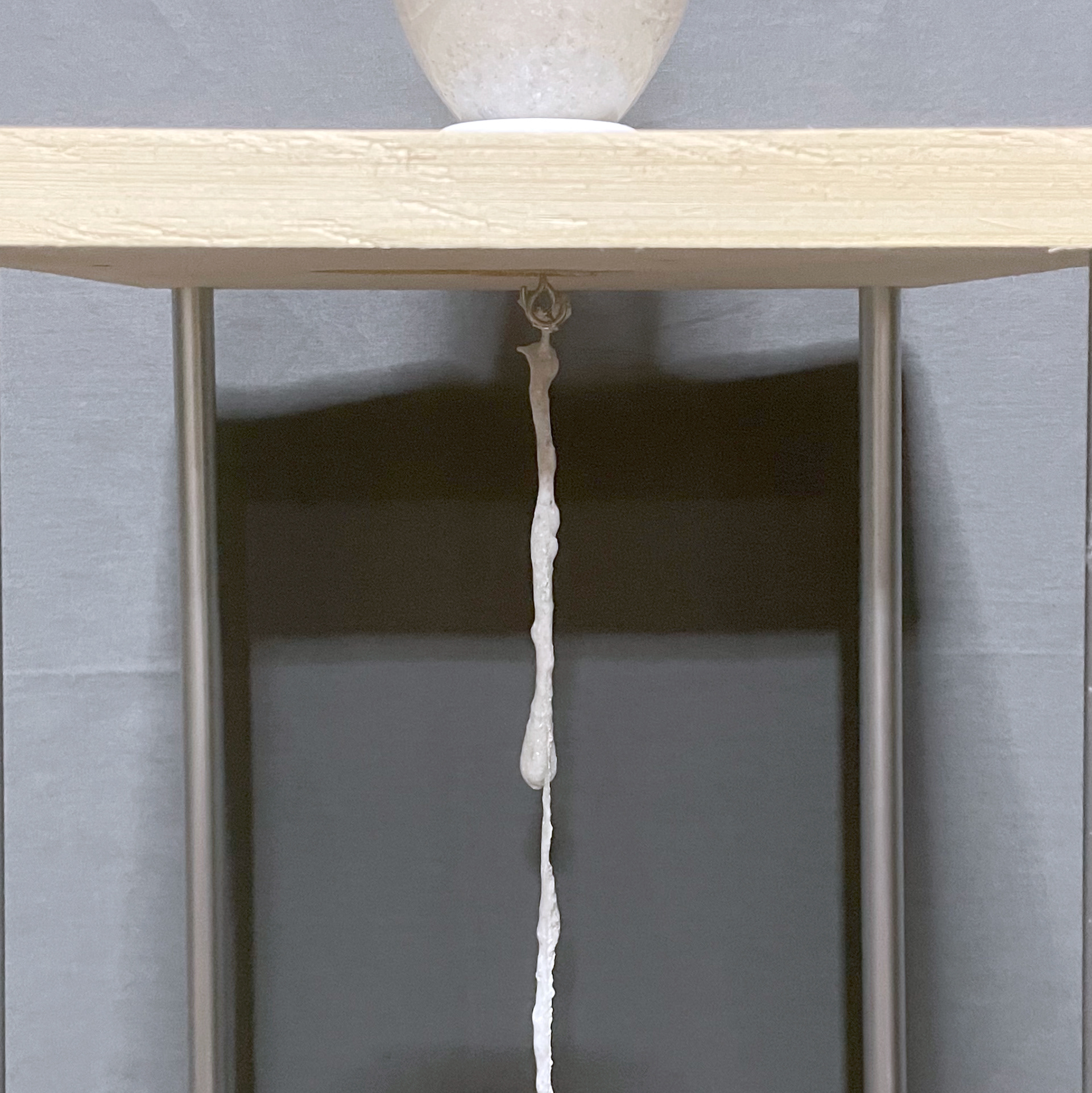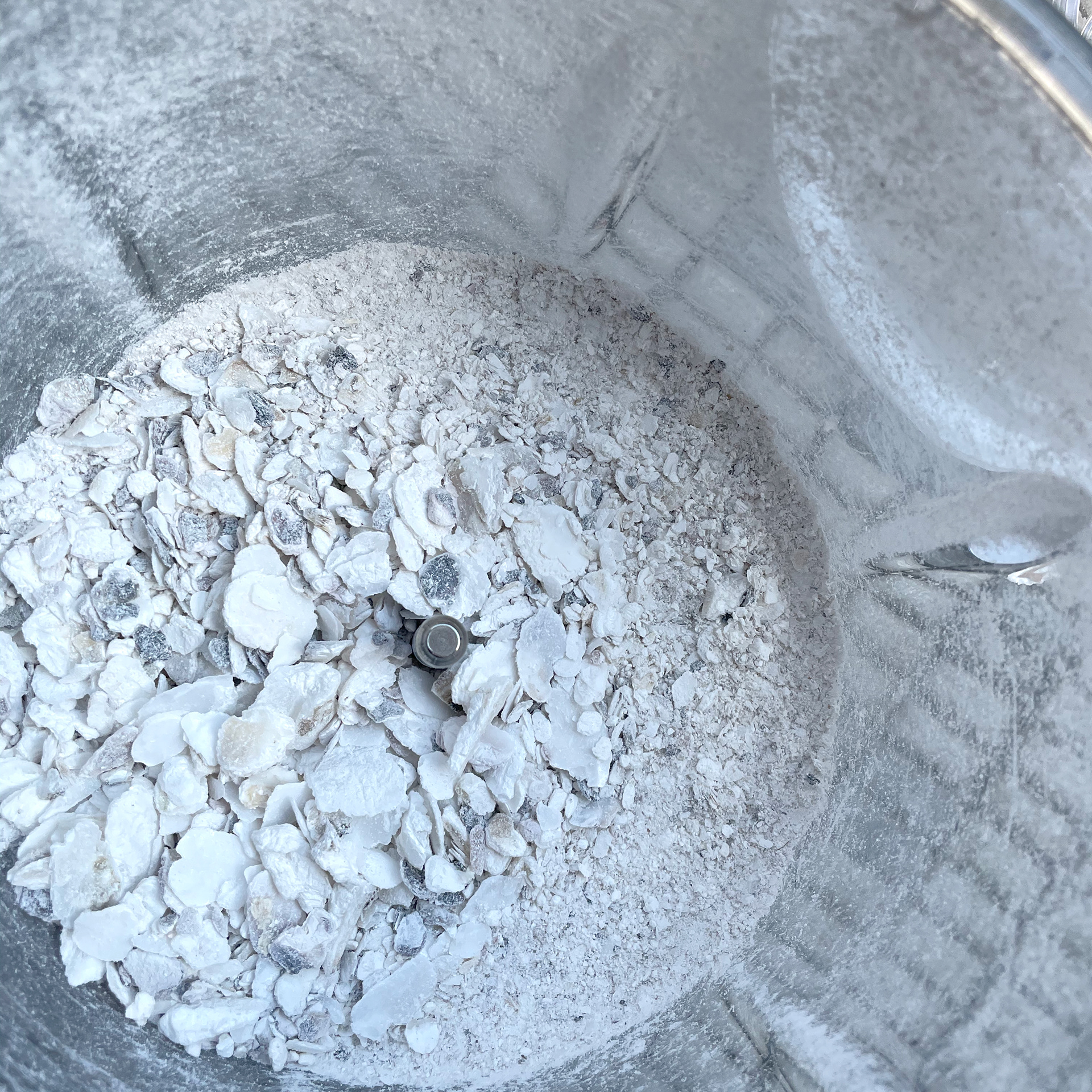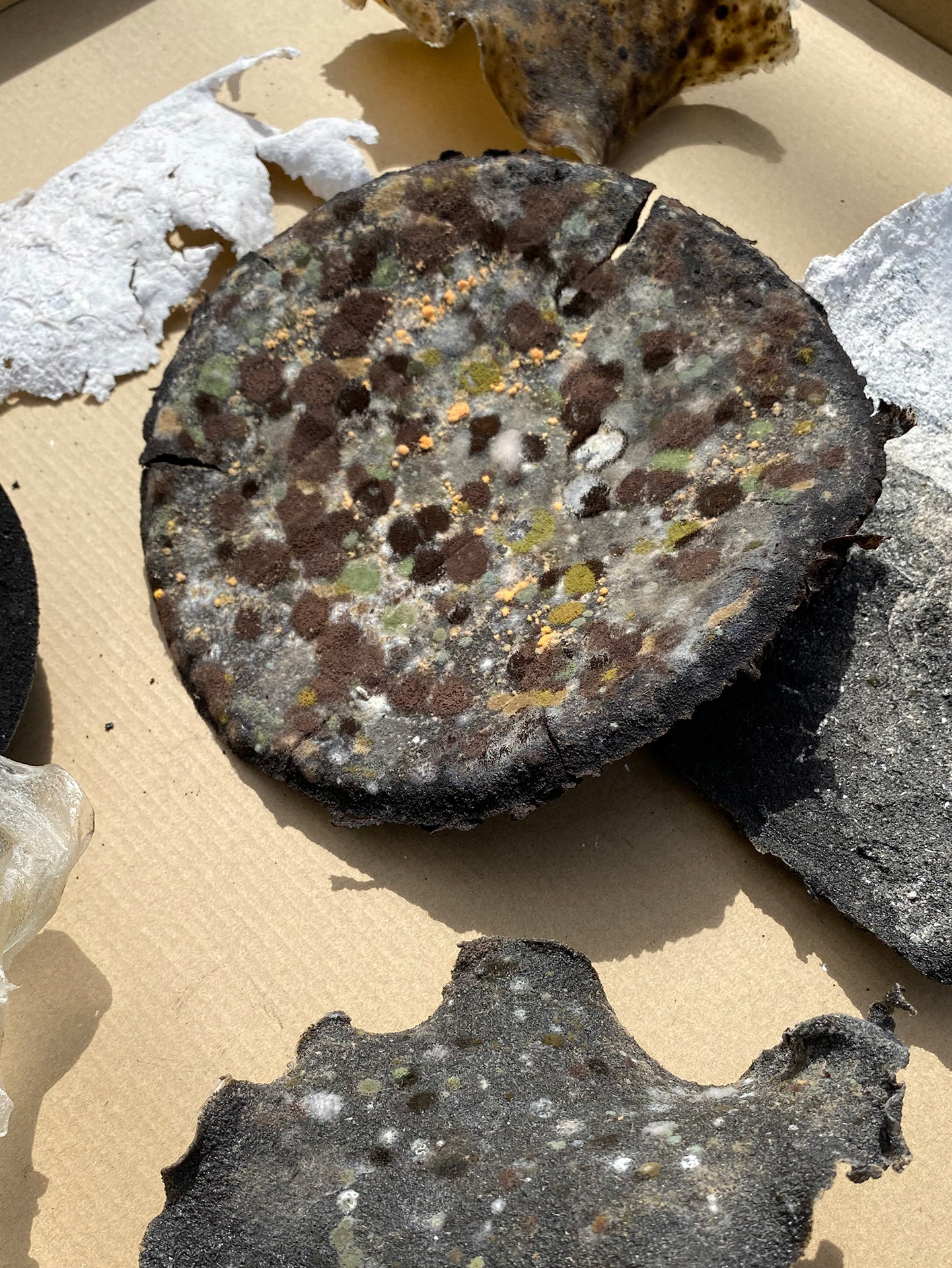

The core purpose of this work is to explore the ways in which bio-waste materials can mimic forms of nature by following natural processes to understand how the passing of time shapes the aesthetic of natural forms. Calcium carbonate, a mineral which makes up the core composition of stalactites and stalagmites, can also be found in food waste such as shrimp shells and oyster shells. The natural processes of mineral formation leading to natural stalactites and stalactites are typically observable over years or decades. In this project, the icicle-shaped formations which would normally occur as a result of mineral precipitation resulting from water dripping through a cave ceiling are imitated by dripping using calcium carbonate taken from oyster shells. This approach allows the artist to study this process through an accelerated timeframe, and the resulting structure is built mainly from waste, which imitates natural shapes and formations observed in natural phenomena formed over many years. It is the hope of the artist that this exploration can inspire the use of sustainable materials in future architectural projects.


แนวคิดหลักของงานชิ้นนี้คือการสำรวจวัสดุเหลือใช้ทางชีวภาพ ศึกษาและลอกเลียนแบบรูปแบบของธรรมชาติโดยใช้ปรากฏการณ์เดียวกันนี้เพื่อให้เข้าใจลึกซึ้งยิ่งขึ้นเกี่ยวกับตัวแปรของ "เวลา" และ “รูปแบบในการเกิดรูปร่าง” ที่กลายเป็นหนึ่งใคุณค่าในการสร้างชิ้นงาน เนื่องจากแคลเซียมคาร์บอเนตพบในเศษอาหารบางชนิด เช่น เปลือกกุ้งหรือเปลือกหอยนางรม แร่ธาตุชนิดเดียวกันจึงพบใน 'หินย้อย' และ 'หินงอก' ในถ้ำ กระบวนการ 'หินย้อย' ในธรรมชาติจริงแล้วนั้นใช้เวลาหลายปีกว่าจะถึงจุดและขนาดที่แน่นอน ในฐานะศิลปินที่สนใจในการปรากฏการณ์ทางธรรมชาติ งานชิ้นนี้จึงจะเป็นการสร้างรูปแบบชิ้นงานโดยใช้หลักของวิธีการ ‘หยด’ ที่แสดงถึงการก่อตัวเป็นเสาหินงอกหินย้อยที่เป็นเหมือนดั่งผลงานการพิมพ์ 3 มิติทางธรรมชาติที่สวยงามในถ้ำ ที่เกิดขึ้นจากแคลเซียมคาร์บอเนตจากเปลือกหอยนางรมที่เหลือทิ้งเป็นวัสดุหลัก และสำรวจว่าจะมีวิธีการใดที่จะสามารถเร่งกระบวนการในการสร้าง เสา3 มิติทางธรรมชาติ เพื่อจะปูทางให้กับการใช้งานเชิงโครงสร้างทางด้านสถาปัตยกรรม
What are the challenges?
"The biggest challenge with this project is how to deal with the raw material ‘Oyster Shell’. The process of getting the material ready before mixing requires strong tools, viable space, worker’s creativity and most of all worker strength since the material is very hard to crush. The second challenge is the method of producing the art piece is time consuming which is, however, part of the purpose of this experiment. Within this challenge, it also includes the testing of a different formula of biochemical mixing in order to get the right viscosity level for dripping. The last one which is not that strong to take into my concern, but willing to share, is the smell of salty sea from the material."
Why do you find these ingredients/materials interesting?
"First would be the mineral that contain inside the selected material is very interesting, calcium carbonate is something that I always wonder about especially if you can think of seeing this mineral in almost every protection tier of bio mechanism (e.g. oyster shell, shrimp shell, egg shell) and I chose this due to the purpose of the work. Second would be the growing size of the seafood industry, which reflects on the amount of the leftovers. During my experiment, I found that sizing of the crushed shell before mixing and forming the workpiece can deliver different values for your work, which are the strength and texture of the material."
Do you feel content with the work?
"Since it is quite a challenging process of making this piece of work, it was very satisfying in terms of how new knowledge occurs during the process, including a wonderful workshop with the project initiator (Anya). The final outcome, however, didn’t come out like I wish it was supposed to be, but the new perspective toward bio material is broader and influences me to keep exploring the alternative choice of material."



What do/don't you like about working with biomaterials?
"There are several things I like about working with biomaterials. The first thing must be the idea of how we can take it from food waste and turn it into something valuable and there are many cool biomaterials out there that I personally don’t quite understand yet. However, there are some parts in working with biomaterials that I didn’t enjoy; I had to deal with the smell of it (especially shrimp shell) and the hardness of the material that broke my kitchen equipment!"
Do you want to explore more with biomaterials in the future?
"Definitely! What I have learnt from this project is only with a few biomaterials and I haven’t try many of them yet which I believe I could be able to take more time and understand it deeper in order to extract some values (property, texture, scents, colour etc.) out of those mysterious materials. I believe in the future, biomaterials will become more popular among artists and designers according to environmental issues, which means to consider using materials that are possibly harmless to nature is crucial for our thinking process."



Pipe Tapanon Amatayakul - Designer
I’m interested in exploring the exchange between human and digital as experimentation using design thinking as a foundation. I have worked as a graphic media designer for 4 years in the areas of branding, digital media, education and art. I experienced a variety of works in the creative industry. Recently, I've been working as a Creative Technologist with additional roles as a Design Researcher and Interaction designer at a business transformation consultant company based in BKK. Since my full-time profession has changed into more of a business world but my love for art and craft is still inside me, I’m interested in exploring new materials and opportunities to use it in my part-time profession.
Email: tapanon.a@gmail.com
Website: pipeamat.com
Instagram: @pipe_amat





















